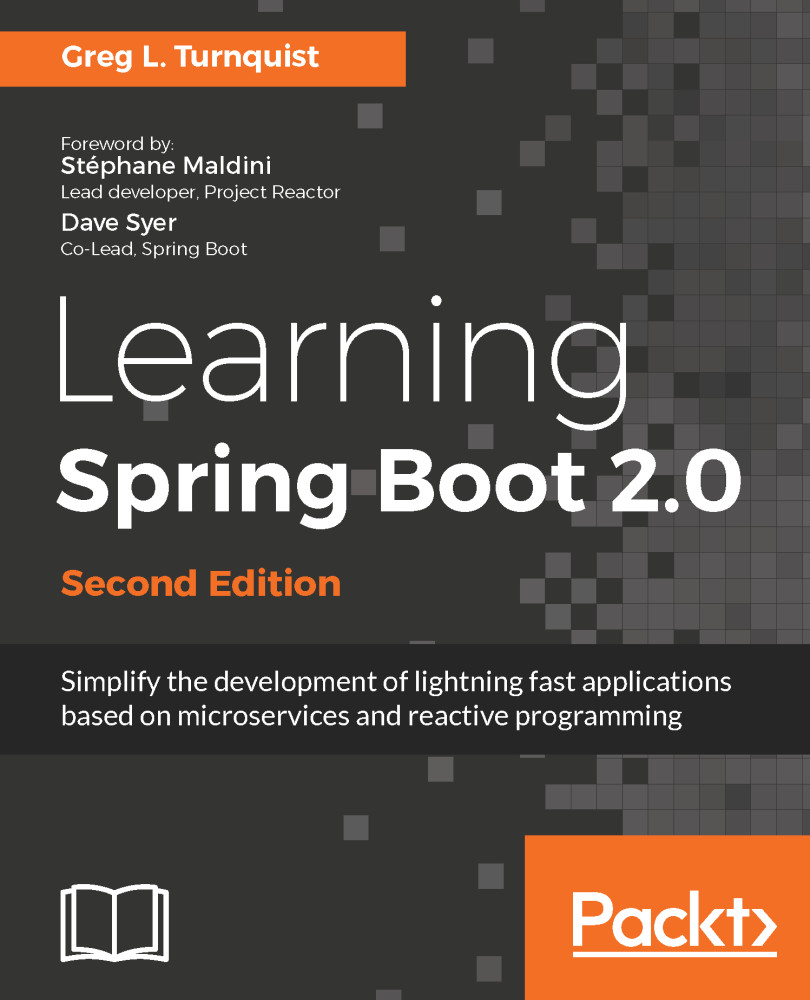Most innovative contribution to the java ecosystem: spring Boot #jaxlondon
– @JAXenter
If we go back more than 10 years, we would find testing a process mostly conducted by legions of test engineers. But with the rise of JUnit, the adoption of continuous integration (CI) servers, a plethora of test assertion libraries, and integrated test coverage services, we can see widespread adoption of automated testing.
In this chapter, we will see how critical Spring Boot views automated testing by providing multiple levels of support. We shall do the following:
- Write some basic unit tests
- Introduce slice testing
- Embark upon WebFlux testing
- Leverage complete embedded container testing
- Draft some autoconfiguration tests


